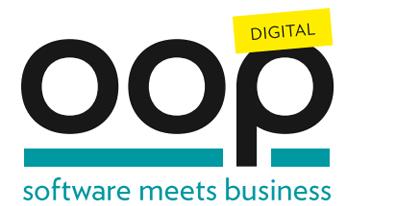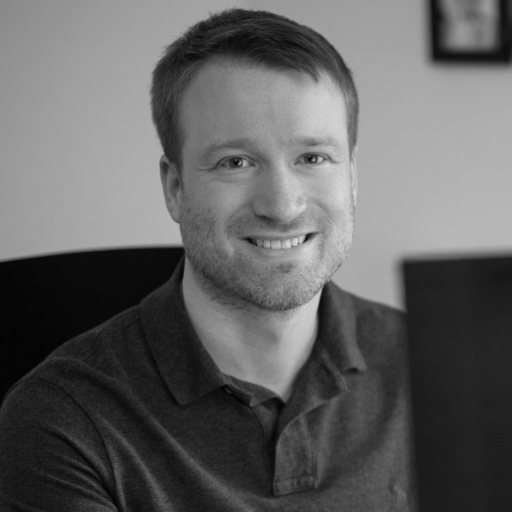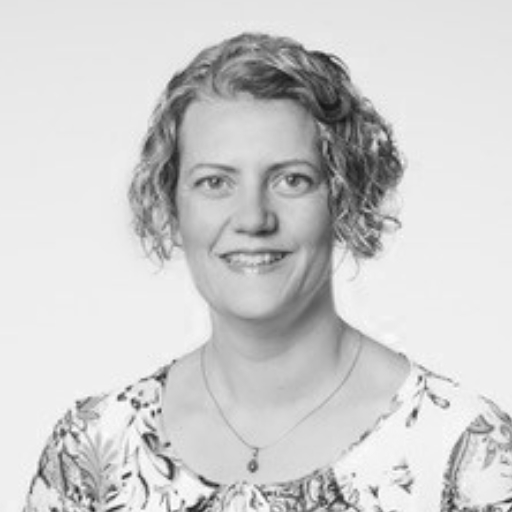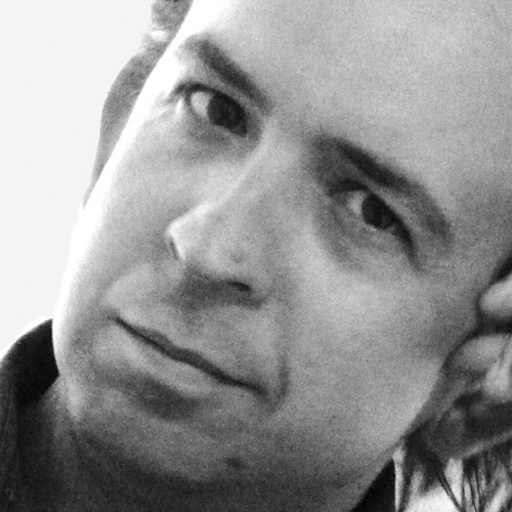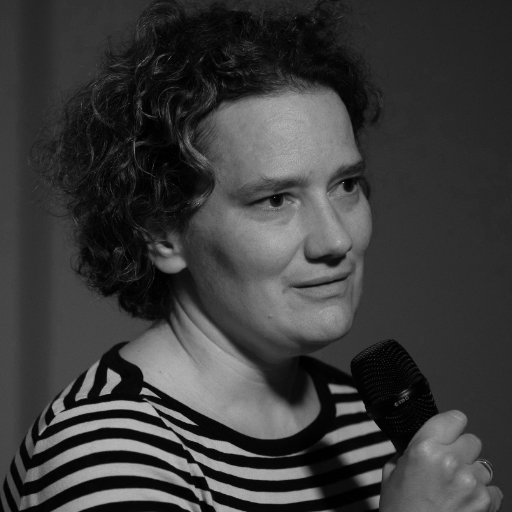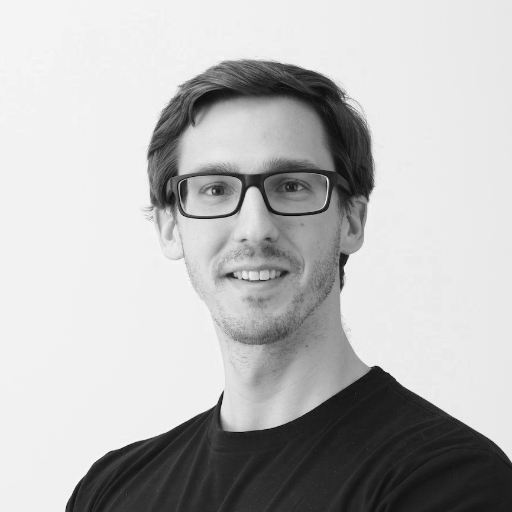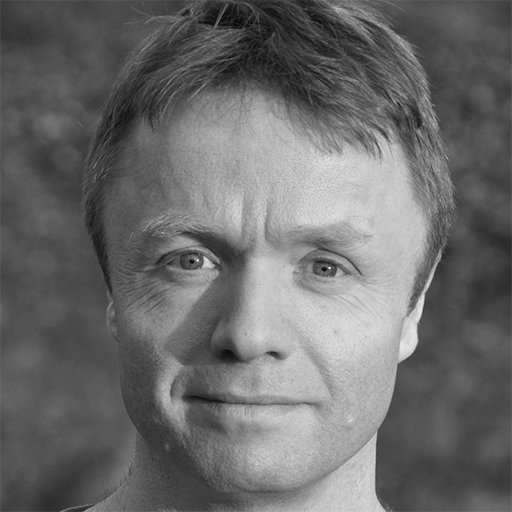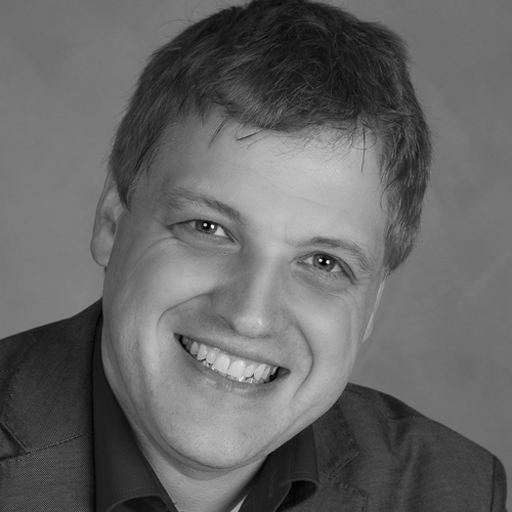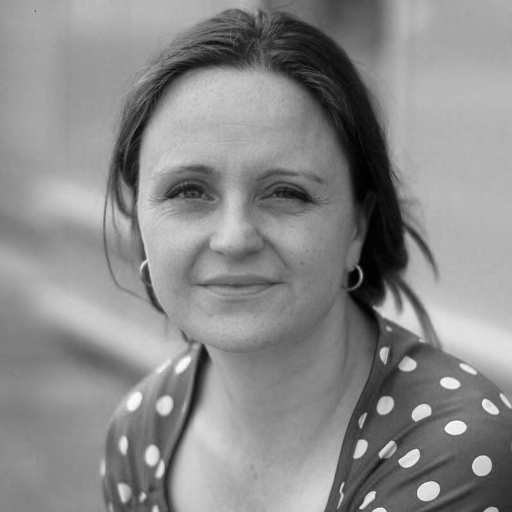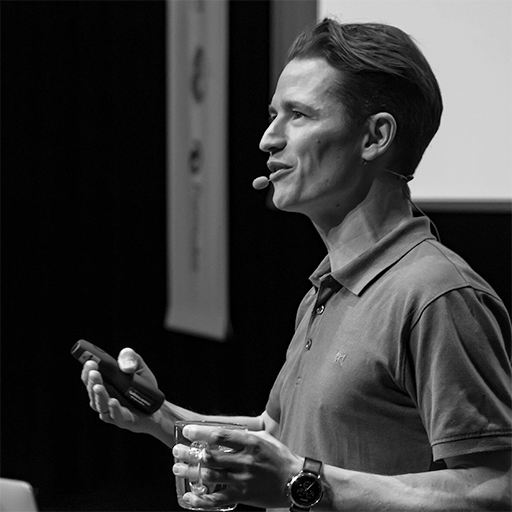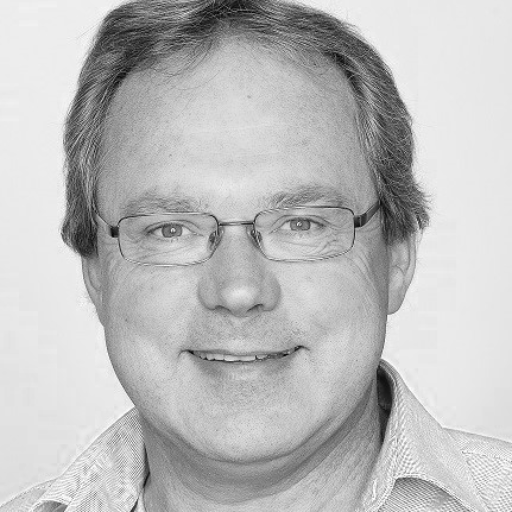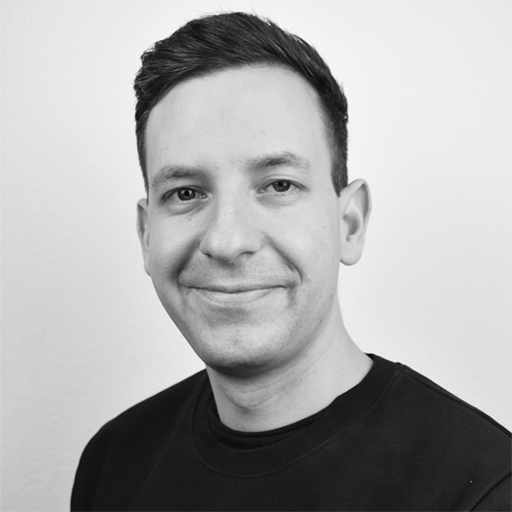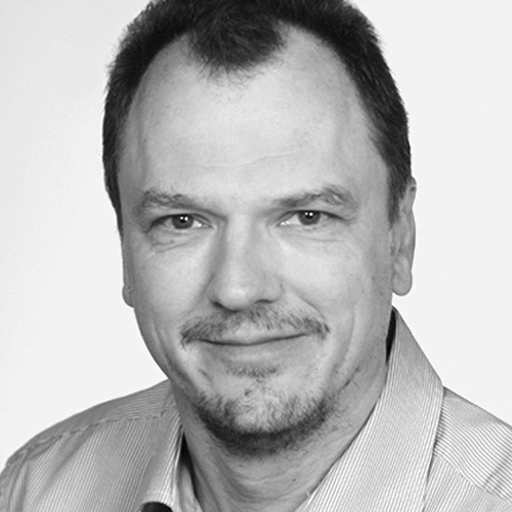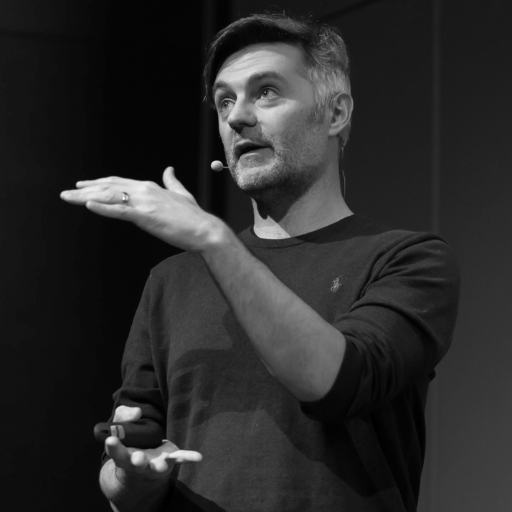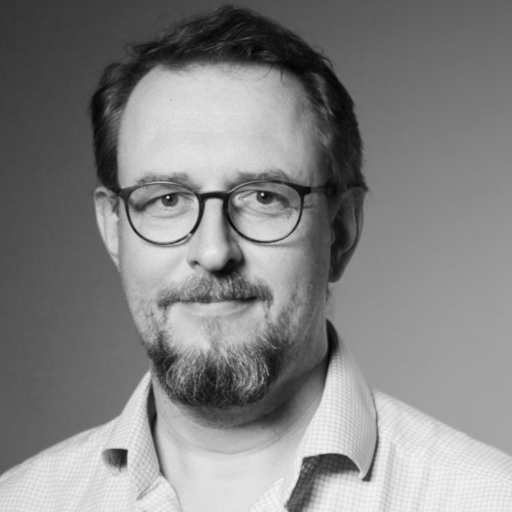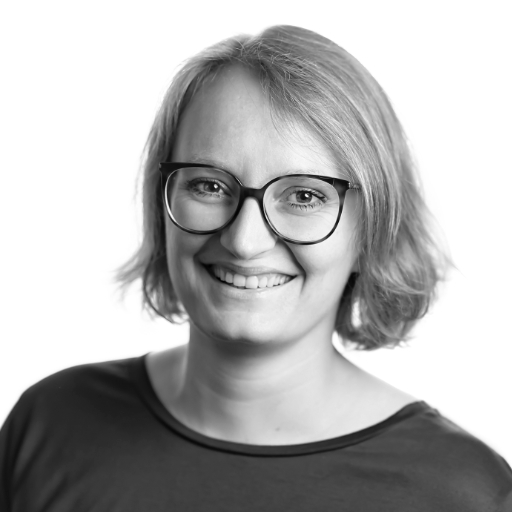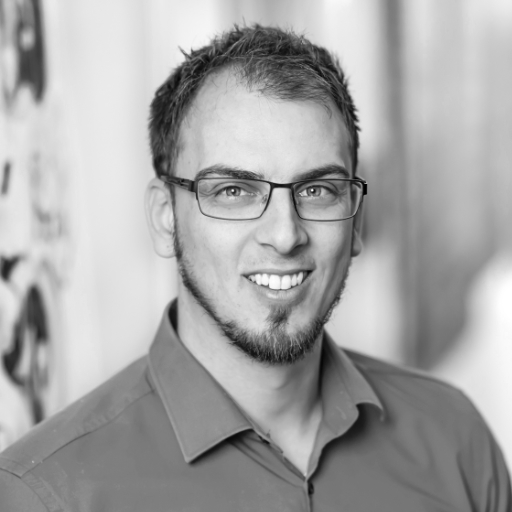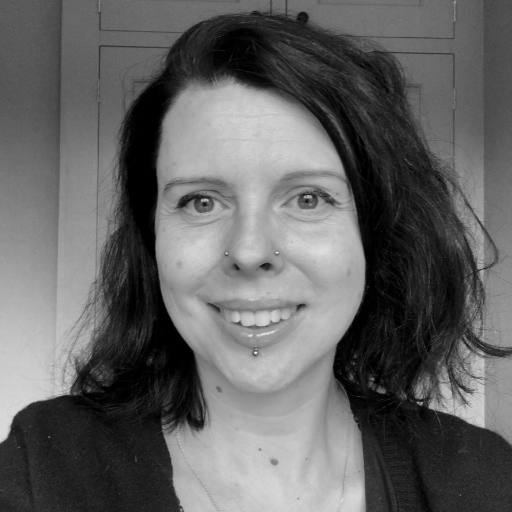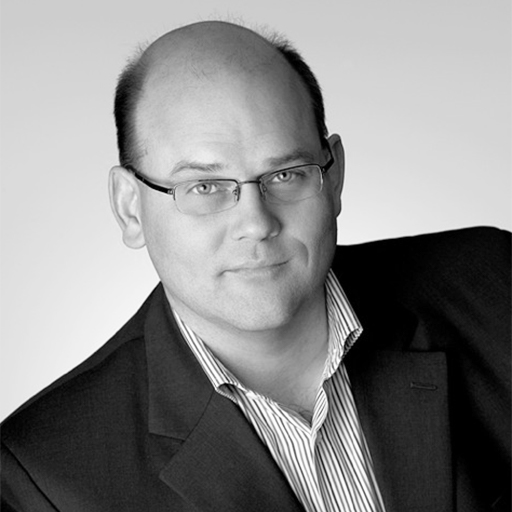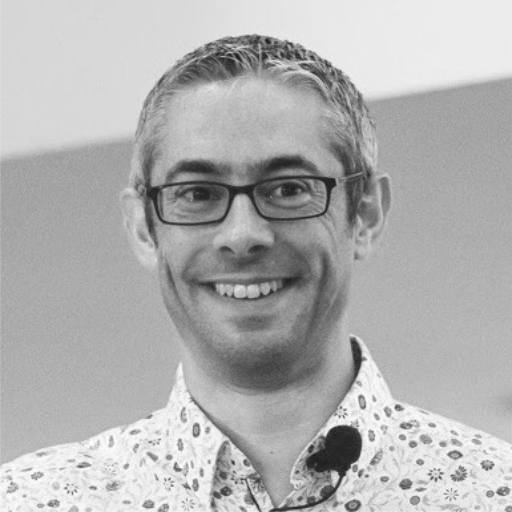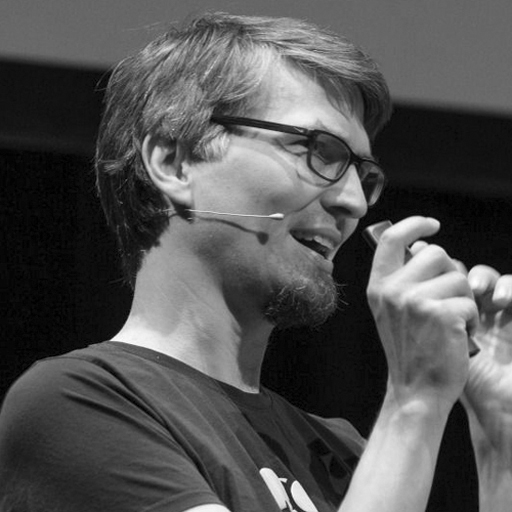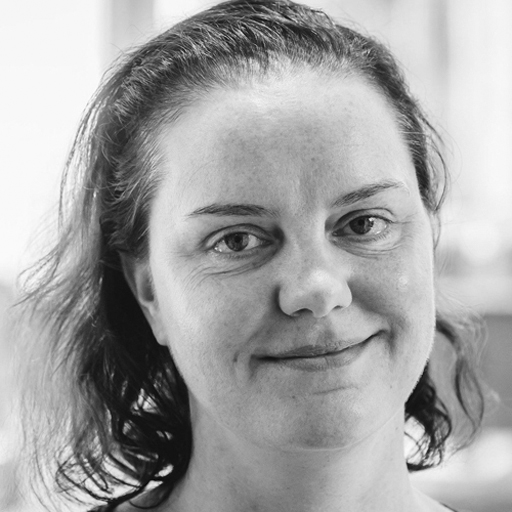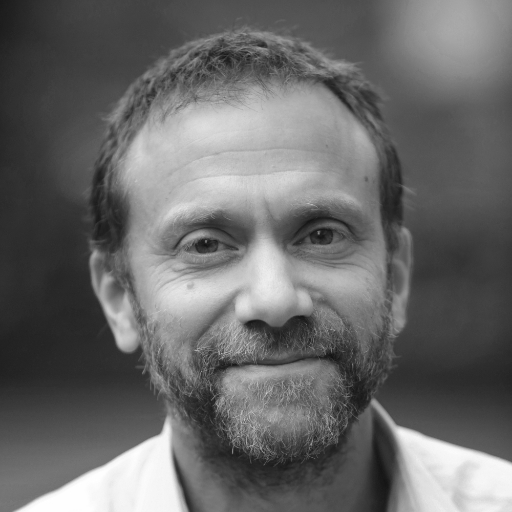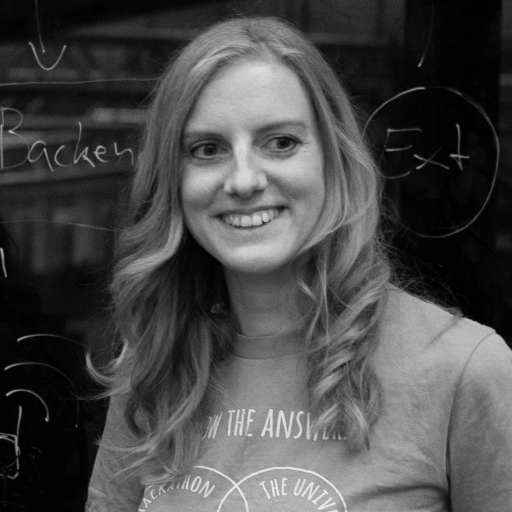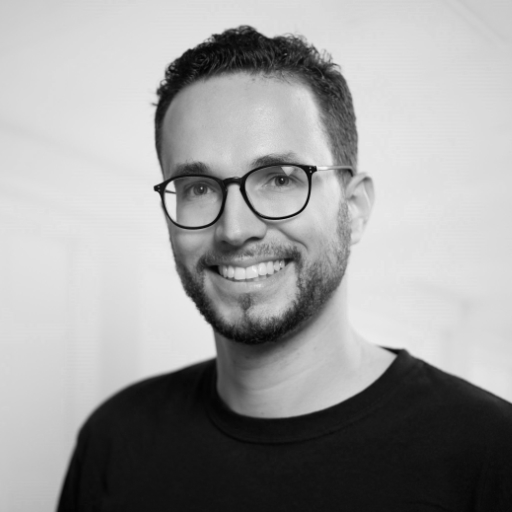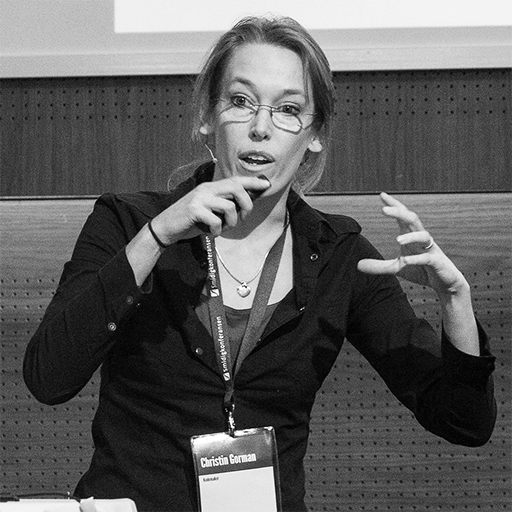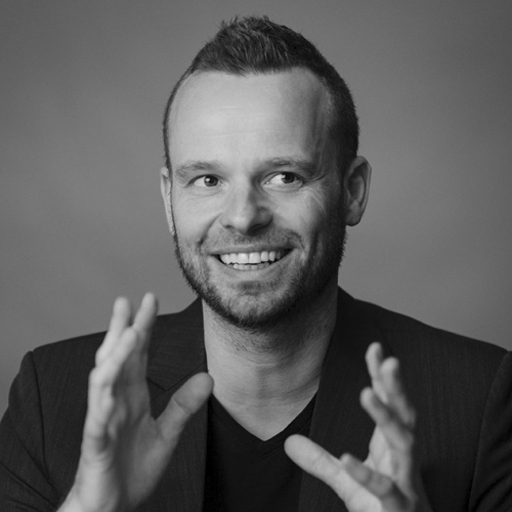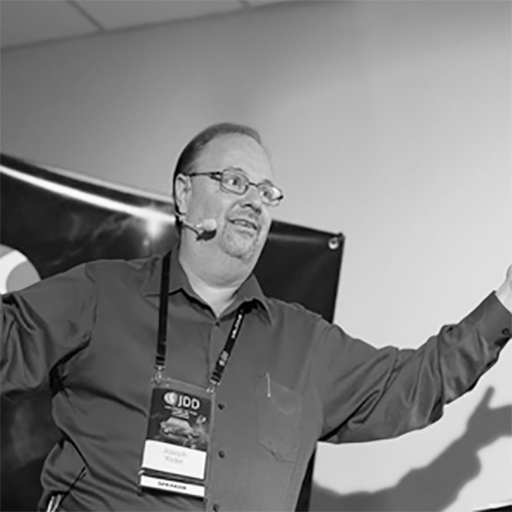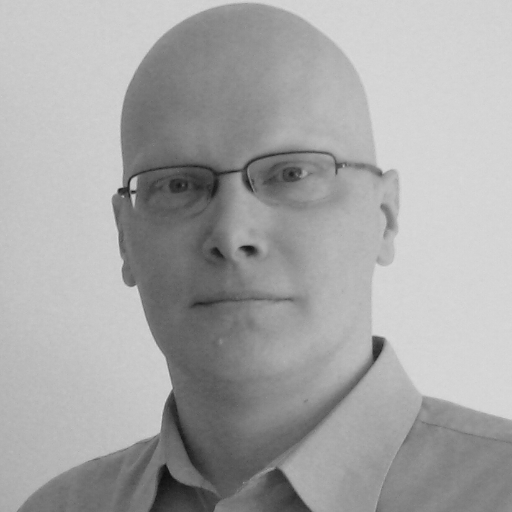Please note:
On this page you will only see the English-language presentations of the conference. You can find all conference sessions, including the German speaking ones, here.
The times given in the conference program of OOP 2023 Digital correspond to Central European Time (CET).
By clicking on "VORTRAG MERKEN" within the lecture descriptions you can arrange your own schedule. You can view your schedule at any time using the icon in the upper right corner.
Thema: Architecture
- Montag
06.02. - Dienstag
07.02. - Mittwoch
08.02. - Donnerstag
09.02.
This highly interactive workshop is all about software architecture - with Spring Boot, the Java microservice framework. Using an example application, we will discuss and try out the following topics in code:
- REST API design
- Hexagonal architecture
- Bean validation
- Single sign-on with Keycloak
- Role-based security
- Optimistic locking with ETags
- OWASP dependency check
- Structured JSON Logging
- Error handling
- Integration tests with Cucumber
- Architecture tests with ArchUnit
- Local deployment with Docker
- Reverse proxy with NGINX
Please install the following software before the workshop (if not already available):
- Java 17+
- Gradle 7.3+
- Docker 19+
- git
- an IDE of your choice (like IntelliJ IDEA)
On Windows, we also highly recommend you install the Windows Subsystem for Linux 2+.
Target Audience: Software Architects, Software Engineers, Java Developers
Prerequisites: Basic knowledge in Java, Interest in software architecture
Level: Advanced
Extended Abstract:
Prerequisites:
This workshop is highly interactive. You will benefit greatly from trying it out for yourself as well.
Please install the following software before the workshop (if not already available):
- Java 17+
- Gradle 7.3+
- Docker 19+
- git
- an IDE of your choice (like IntelliJ IDEA)
On Windows, we also highly recommend you install the Windows Subsystem for Linux 2+.
The example application "Chameleon" that will be used in this workshop has been designed as an educational example project for learning the basics of the Spring Boot ecosystem. But project "Chameleon" tries to be more than just a simple "hello world". It has all the needed parts in place to be as close to a "real world" production-ready software as possible.
Project "Chameleon" currently contains the following features:
General
- Backend with Spring Boot
- Yaml configuration file
- Hexagonal architecture
- Build with Gradle
- Local deployment with Docker
- Reverse proxy with NGINX
REST API
- Definition of RestController with GET, POST, DELETE and PATCH
- Description of REST API with OpenAPI
- Swagger UI
- Dtos
- Model mapper
- Bean validation
- Global error handler
- Local error handler
- Request ids
- Optimistic locking with ETags
Database
- Storage in relational database with PostgreSQL
- JPA, JpaRepository (Spring Data)
- Database migration with Flyway
Security
- Integration of SSO (single sign-on) with Keycloak
- Role-based security (JSR250)
- OWASP dependency check
Logging
- JSON logging
- Structured logging
- Logging of request ids
- Logging of user and roles
Testing
- Unit tests with JUnit 5
- Assertions with Google Truth
- Architectural unit tests with ArchUnit
- Coverage report of unit tests with JaCoCo
- Integration tests with Cucumber
Dr. Christoph Ehlers is the Head of Software Engineering at ConSol. As a project lead, agile coach and software architect, he ensures the successful completion of IT projects. After studying computer science at the University of Passau, where he also earned his doctorate, Christoph Ehlers found his way to ConSol more than seven years ago. He is particularly interested in software architecture and databases. Caution: His enthusiasm for technology is contagious!
Mehr Inhalte dieses Speakers? Schaut doch mal bei sigs.de vorbei: https://www.sigs.de/autor/christoph.ehlers
Today we must deal with shorter time-to-market, increasing complexity and more agility while keeping quality and other key system properties high.
To address these challenges the right balance in testing w.r.t. independence, timing, automation, and formality is critical but often not explicitly tackled.
Therefore, in this interactive tutorial we reflect on our current approach on balancing testing, investigate and discuss needed strategies, tactics, and practices, and share experiences to improve and sustain our testing approaches!
Max. number of participants: 40
Target Audience: Test Architects, Test Engineers, Product Owners, Quality Managers, Software Architects, Developers
Prerequisites: Basic knowledge about testing and quality engineering
Level: Advanced
Extended Abstract:
Today we must deal with shorter time-to-market, increasing complexity and more agility while keeping quality and other key system properties high. Our test systems increase in size, volume, flexibility, velocity, complexity, and unpredictability. Additionally, digitalization requires more than just a face lift in testing.
To address these challenges the right balance in testing w.r.t. independence, timing, automation, and formality is critical but often not explicitly tackled. Therefore, in this interactive tutorial we reflect on our current approach on balancing testing, investigate and discuss needed strategies, tactics, and practices in different areas, and share experiences and lessons learned to improve and sustain our testing approaches!
The following areas in testing are covered w.r.t. their appropriate balancing:
- Level of independence – independent vs. fully integrated with development
- Timing – too early vs. too late
- Degree of automation – automated vs. manual
- Formality – formal vs. informal, scripted vs. exploratory
- Test case design – structured vs. experience-based, black-box vs. white-box
Peter Zimmerer is a Principal Key Expert Engineer at Siemens AG, Technology, in Munich, Germany. For more than 30 years he has been working in the field of software testing and quality engineering. He performs consulting, coaching, and training on test management and test engineering practices in real-world projects and drives research and innovation in this area. As ISTQB® Certified Tester Full Advanced Level he is a member of the German Testing Board (GTB). Peter has authored several journal and conference contributions and is a frequent speaker at international conferences.
Vortrag Teilen
Approval testing is a technique that helps you to get a difficult codebase under test and begin to control your technical debt. Approval testing works best on larger pieces of code where you want to test for multiple things and interpreting failures is challenging.
In this hands-on session we'll introduce a commonly-used Approval testing tool for Java and through hands-on exercises learn to get control of some example code. The same tool is also available for many other programming languages, see https://approvaltests.com/
Bring a laptop.
Max. number of participants: 30
Target Audience: Developers, Architects
Prerequisites: Basic knowledge of Java and unit testing, bring a laptop
Level: Basic
Extended Abstract:
Introducing Approval Testing (55 minutes)
- Code Review: examine existing test case, discuss strengths & weaknesses
- Demonstration: Convert an assertion-based test to use Approval testing
- Hands-on exercise: Add some tests using Approvals.Java.
Break (5 minutes)
Approval Test Design (50 minutes)
- Presentation: Approval testing characteristics and design patterns
- Exercise: Using the default XML printer with Approvals.Java
- Demonstration: Using scrubbing with an XML printer
- Discussion: when to print, when to scrub
Printer Design (30 minutes)
- Exercise: Designing a printer for a domain object
- Presentation: Case studies
- Q&A (10 minutes)
Emily Bache is an independent consultant and Technical Coach. She works with developers, training and coaching effective agile practices like Refactoring and Test-Driven Development. Emily has written two books and teaches courses on platforms including Pluralsight and O’Reilly. A frequent conference speaker, Emily has been invited to keynote at prestigious developer events including EuroPython, Craft and ACCU. Recently Emily founded the Samman Technical Coaching Society, a not-for-profit organisation which aims to support and inspire technical coaches around the world.
It is common to consider software architecture as structure, as infrastructure, as code, as technologies, as models, and so on, but what if we consider software architecture as knowledge? The idea that software architecture is the set of significant decisions about a system is not a new one, but those decisions represent knowledge.
When we embrace the idea of knowledge as a first class concept, that has implications for our documentation (such as architecture decisions records), for our code and for our development process.
Target Audience: Developers, Architects, Managers, Coaches, Leaders
Prerequisites: No specific prerequisites
Level: Advanced
Extended Abstract:
It is common to consider software architecture as structure, as infrastructure, as code, as technologies, as models, and so on, but what if we consider software architecture as knowledge? The idea that software architecture is the set of significant decisions about a system is not a new one, but those decisions represent knowledge.
When we embrace the idea of knowledge as a first class concept, that has implications for our documentation (such as architecture decisions records), for our code and for our development process.
This session will explore a number of concepts and practices that relate architecture to existing development practice and agile approaches. It will revisit patterns, explore ADRs, relate architecture to lean thinking, PDSA, hypothesis-driven development, and more.
Kevlin Henney is an independent consultant, speaker, writer and trainer. His development interests are in programming, practice and people. He is co-author of two volumes in the ”Pattern-Oriented Software Architecture” series, and editor and contributor for multiple books in the ”97 Things” series. He lives in Bristol and online.
Due to the lack of user focus, lots of container platforms have a big developer experience GAP.
That's not only because building a Kubernetes platform is complex but also because deploying applications on Kubernetes requires expertise in many Container and Kubernetes concepts.
Developers today shouldn’t have to care how their applications run and focus on adding business value.
In this session, we will explore some of the powerful open source technologies available within the Kubernetes ecosystem to close the developer experience gap.
Target Audience: Developers, DevSecOps
Prerequisites: Basic knowledge in Kubernetes and software development
Level: Advanced
Extended Abstract:
Due to the lack of user focus, lots of container platforms have a big developer experience GAP.
That's not only because building a Kubernetes platform is complex but also because deploying applications on Kubernetes requires expertise in many Container and Kubernetes concepts. And once developers learn them, they still must spend a lot of time maintaining containers, writing YAML templates, and orchestrating many moving Kubernetes parts.
Like in the days when the Waterfall model was the standard for software development, developers today shouldn’t have to care where and how their applications run and focus on adding business value by implementing new features.
In this session, we will explore some of the powerful open source technologies available within the Kubernetes ecosystem to close the developer experience gap.
Timo Salm is based out of Stuttgart in southwest Germany and in the role of the first VMware Tanzu Solutions Engineer for Developer Experience in EMEA with a focus on VMware Tanzu Application Platform and commercial Spring products. In this role, he’s responsible for educating customers on the value, vision, and strategy of these products, and ensuring that they succeed by working closely on different levels of abstractions of modern applications and modern infrastructure.
Before Timo joined Pivotal and VMware, he worked for more than seven years for consulting firms in the automotive industry as a software architect and full-stack developer on projects for customer-facing products.
Vortrag Teilen
For a technology company, building a strong engineering culture is essential for long-term success. Today's software industry is growing so fast that a large proportion of developers will inevitably have less than 5 years experience. At the same time, many software systems contain code that is ten, twenty or even thirty years old.
It's a constant challenge to communicate a healthy culture to newcomers and prevent technical debt from getting out of control. Technical coaching is all about tackling those issues: culture and skills.
Target Audience: Developers, Architects
Prerequisites: None
Level: Basic
Extended Abstract:
The Samman method is a concrete coaching method for spreading skills and culture within an engineering organization. There are two main parts to the method:
- Learning Hour
- Ensemble working
In the learning hour the coach uses exercises and active learning techniques to teach the theory and practice of skills like Test-Driven Development and Refactoring. In two-hour Ensemble sessions the whole team collaborates together with the coach in applying agile development techniques in their usual production codebase.
In combination with strong technical leadership, the Samman method can enable the spread of skills and culture to bring a healthy engineering organization to the next level.
Emily Bache is an independent consultant and Technical Coach. She works with developers, training and coaching effective agile practices like Refactoring and Test-Driven Development. Emily has written two books and teaches courses on platforms including Pluralsight and O’Reilly. A frequent conference speaker, Emily has been invited to keynote at prestigious developer events including EuroPython, Craft and ACCU. Recently Emily founded the Samman Technical Coaching Society, a not-for-profit organisation which aims to support and inspire technical coaches around the world.
"Ich hatte keine Zeit, den Zaun zu flicken" - Dieses Zitat kennt wohl jeder, und doch ertappen wir uns selbst, unseren Zaun nicht geflickt, sondern stattdessen die Hühner gesucht zu haben.
Doch wie ändere ich das?
Dieser Vortrag zeigt mit dem Konzept der MLCs ein Tool auf, dieser Falle zu begegnen und sich selbst und andere in den Modus des kontinuierlichen Lernens zu versetzen.
Am Ende haben die Zuhörenden einen ersten MLC durchlaufen und ein Tool erlernt, um sich und anderen den Freiraum zum Lernen zu erschaffen.
Zielpublikum: Coaches, Entscheider, Projektleiter:innen, Transformation Manager, Architekt:innen, Lebenslange Lernende
Voraussetzungen: Keine
Schwierigkeitsgrad: Anfänger
Extended Abstract:
Micro-Learning-Cycles sind kein theoretisches Konstrukt, sie sind tatsächlich aus der Notwendigkeit entstanden, trotz vollem Terminkalender Zeit zum Lernen zu finden.
Neben der Vermittlung und Anwendung von MLC zeigt die Referentin auch aus der Praxis, wo sie MLCs einsetzte, was funktionierte und wo auch Limitierungen sind.
Ihr Motto „You go first! – Nimm dein Leben in die Hand!", steht für ihr Tun: Rein in den nachhaltigen Erfolg durch Eigenverantwortung und Selbstführung.
Anne Hoffmann unterstützt Menschen und Organisationen dabei, erfolgreich ihre Ziele zu erreichen. Als Expertin für Selbstführung und mit ihrem Motto „You go first!“ erinnert sie daran, dass nachhaltiger Erfolg durch hohe Eigenverantwortung insbesondere dann entsteht, wenn diese Selbstführung vorgelebt wird.
Anne benutzt oft Spiele, um Erkenntnisse weiterzugeben.
For a microservices architecture to be successful it is crucial to have the right boundaries between the microservices. But where are the right boundaries? We would like to present a tool that helps us answer this question.
Domain Storytelling is a collaborative modeling method. It brings together domain experts and development teams. We let our users tell us stories about their work. While listening, we record the stories using a pictographic language.
In this talk we show how to find subdomains and which heuristics can help us.
Target Audience: Architects, Developers
Prerequisites: Project experience
Level: Advanced
Extended Abstract:
For a microservices architecture to be successful it is crucial to have the right boundaries between the microservices. But where are the right boundaries? We would like to present a tool that helps us answer this question.
Domain Storytelling is a collaborative modeling method. It brings together domain experts and development teams. We let our users tell us stories about their work. While listening, we record the stories using a pictographic language.
The experts can immediately see if we understand their story. After very few stories, we understand the language of our users and find different areas of the domain. Each of these areas (called a subdomain) is a good candidate to become a microservice in our architecture.
In this talk we show how to find subdomains and which heuristics can help us.
Henning Schwentner loves programming in high quality. He lives this passion as coder, coach, and consultant at WPS – Workplace Solutions in Hamburg, Germany. There he helps teams to structure their monoliths or to build new systems from the beginning with a sustainable architecture. Microservices or self-contained systems are often the result. Henning is author of “Domain Storytelling – A Collaborative Modeling Method” and the www.LeasingNinja.io as well as translator of “Domain-Driven Design kompakt”.
Mehr Inhalte dieses Speakers? Schaut doch mal bei sigs.de vorbei: https://www.sigs.de/autor/henning.schwentner
Vortrag Teilen
The developers have instrumented the applications with OpenTelemetry — great! But that doesn't mean you're ready to roll it out in production yet. What do you need to keep in mind for your instrumentation infrastructure?
* Quick OpenTelemetry overview.
* Tradeoffs between the three architectures you use with OTel (depending on your vendor): vendor exporter vs OTel Collector vs OTel protocol support
* Sampling, including head vs tail based, and how to keep it representative and / or useful.
Target Audience: Architects, Developers
Prerequisites: Software development knowledge and some monitoring experience is also helpful
Level: Advanced
Extended Abstract:
The developers have instrumented the applications with OpenTelemetry — great! But that doesn't mean you're ready to roll it out in production. What do you need to keep in mind for your instrumentation infrastructure? OpenTelemetry is THE emerging standard for monitoring and creating more observable systems. Starting with an overview, this talk then dives into two areas that make a big difference in cost, flexibility, and insights:
Firstly, the three possible integration architectures with vendor exporter, OpenTelemetry Collector, and native protocol support; and why a combination of Collector and native protocol are the most common choice today.
Secondly, sampling or how to get the big picture from a subset of the data (and cost). Here the tradeoffs evolve around head- vs tail-based sampling and how to keep the collected data representative and / or useful. It generally comes down to simpler and cheaper with the head-based approach, while the tail-based one is potentially more useful with higher overhead. And now it's time to roll it out in production!
Philipp Krenn lebt für technische Vorträge und Demos. Nachdem er mehr als zehn Jahre als Web-, Infrastruktur- und Datenbank-Entwickler gearbeitet hat, ist er mittlerweile Developer Advocate bei Elastic — dem Unternehmen hinter dem Open Source Elastic Stack, bestehend aus Elasticsearch, Kibana, Beats und Logstash. Auch wenn er in Wien zu Hause ist, reist er regelmäßig durch Europa und darüber hinaus, um über Open-Source-Software, Suche, Datenbanken, Infrastruktur und Sicherheit zu sprechen.
---------
Philipp Krenn lives to demo interesting technology. Having worked as a web, infrastructure, and database engineer for over ten years, Philipp is now a developer advocate and EMEA team lead at Elastic — the company behind the Elastic Stack consisting of Elasticsearch, Kibana, Beats, and Logstash.
Vortrag Teilen
Many approaches to software architecture assume that architecture be planned at the beginning from the project's quality goals. This is problematic as the macroarchitecture is hard to change, and the quality goals it's based on tend to be unknown at the beginning of a project, or change later. Consequently, it would really be preferable if we could defer the macroarchitectural decisions until later.
This talk shows how to do this using systematic modelling and functional programming.
Target Audience: Developers, Architects
Prerequisites: Basic architecture knowledge
Level: Advanced
Extended Abstract:
What should we do first then? We should write down what we know, at the time we know it, and do it in such a way that we generate reusable components that can be assembled into any macroarchitecture.
Concretely, this can be done by using staple techniques from functional programming:
• building small, flexible combinators instead of fixed attribute-structure OO models
• decoupling pervasively using abstraction
• using immutability to avoid hidden dependencies
The talk shows how to do this, and report on our experience in several concrete projects.
Michael Sperber is CEO of Active Group in Tübingen, Germany. Mike specializes in functional programming and has been an internationally recognized expert in the field: He has spoken at the top conferences in programming languages, authored many papers on the subject as well as several books. Moreover, he is an expert on teaching programming.
Mehr Inhalte dieses Speakers? Schaut doch mal bei sigs.de vorbei: https://www.sigs.de/autor/michael.sperber
Vortrag Teilen
Re-purchasing an application is seen as the top of craftsmanship for cloud migrations. But people have rarely seen such a project in practice. This is the courageous journey of a real consumer product running on expensive infrastructure for years with 2 million active users and more than 6PB of data.
The talk takes you on a journey to a German public cloud and shares all the learnings - about shifting massive data, about terraforming infrastructures, about customizing open source and about all it takes to launch and stay in business.
Target Audience: IT people with no fear of few technical details
Prerequisites: Curiosity about a real public cloud modernisation approach
Level: Advanced
Extended Abstract:
The journey will have the following stages:
Stage 1: How architecture for such a quest looks like and how to start?
Three architecture goals will drive the rest of the journey:
- Efficient scaling
- Minimal run efforts
- Release robust customisation
Stage 2: Customisation of an Open Source product
Stage 3: Migration - decisions and actual experiences during migration
Stage 4: Rollout and staying alive
Bernd Rederlechner ist einer der Principal Lead Architects von T-Systems mit Schwerpunkt "Digitale Lösungen". Er war verantwortlich für die Lieferung von kleinen Innovationsprojekten, aber auch von wirklich großen Landschaftsvorhaben, wo er immer eine Balance zwischen Product Owner, Dev, Ops, Test und Security finden musste. Heute liegt seine Passion im Aufbau von Teams, die digitale Ideen zur Reality machen können - für Kunden und für die Deutschen Telekom.
Mehr Inhalte dieses Speakers? Schaut doch mal bei sigs.de vorbei: https://www.sigs.de/autor/bernd.rederlechner
Vortrag Teilen
I will share our hands-on experience with a cloud native (container) transformation that is currently unfolding. Technically, implementing an Open Shift Container Platform (bare metal) is pretty challenging. Doing this in a way that we will have pretty stuff in our data centers and at the same time making sure that our technical possibilities are actually being used effectively by product developers ... is a different challenge all together.
Join this session if you'd like to hear what we figured out about the people side of this kind of change!
Target Audience: Architects, Management, Developers, Operational Heroes, Product Owners, Agile Coaches, Scrum Masters
Prerequisites: Basic knowledge of DevOps concepts
Level: Advanced
Extended Abstract:
In this session I will share our hands-on experiences implementing a container-based architecture in our organisation. Choosing to implement Open Shift (bare metal) as your container platform is pretty difficult and challenging technically. It is also rather exciting and not too difficult to find smart people willing to help you build and run this new platform. However, it turns out that there is far more to this challenge than just the technology. Therefore, we are adopting an evolutionary implementation approach - stringing together small experiments - towards a flexible, more experimental and proactive culture that will allow us to actually benefit from the technical possibilities our new platform offers. This session is our story of our evolutionary and experimental approach and what we discovered along the way that works in this kind of transformation. Our main "discovery" is that even though at first it seemed mostly a technical transformation, it actually is far more of a human challenge.
We are right in the middle of this transformation so in this talk, I will bring you the latest and most valuable insights and experiences regarding this organisational and cultural transformation that is needed to turn the potential of our container platform into actual value for our organisation. We will summarise our ideas in a practical "this might work" list (bear in mind however there are no best practices, just patterns that might work in your specific situation).
An example of an experiment that turned out useful in our situation is: "create a small separate team that will drive this change". In our organisation we strive to build end-to-end teams, so at first we tried to get this new platform started from within the regular Infra DevOps team (as a huge Epic on the backlog). But people however got swamped in work and annoyed by all the context switching this required. Team members got tired and frustrated with the huge amounts of work, sky high ambitions and lack of progress. So, in the end we did a small experiment by creating a separate, dedicated, core team to get things going. This experiment turned out to be successful (and was thus extended) because it allowed team members to focus on the development of the platform and to build, document and share their experiences along the way, so that this team is also able to incrementally onboard the other teams along the way. Busy OPS-teams and product teams can't just develop the new platform on the side, next to all their other ongoing work. Building a container platform is epic and needs dedicated time and focus, also to keep people in their best energy.
I will share some of our most useful experiments and experiences, all having to do with the human side of this container transformation.
This session is not meant for decision making on going cloud native or not. If you do go cloud native, please bear in mind it is still about people, most of all!
Maryse Meinen is a product leader, currently working in a product owner role, building a full-blown container platform for a new IT infrastructure, together with an awesome team. She is also an active practitioner of Stoic philosophy, trying to live according to values like "humans are made for cooperation", "wisdom" and "perseverance". Always keeping an eye on the human aspect of our work, she strives to humanise our workplace a bit more every day.
Vortrag Teilen
Discipline, determination, a highly visible area, and a few sticky notes, are all you need to move beyond problems with technical debt.
Target Audience: Developers, Project Leader, Designers, Product Owners, Decision Makers
Prerequisites: Basic Knowledge of Software Development Process
Level: Basic
Extended Abstract:
## Making great software is challenging
It doesn't matter how qualified a team is, it will never be able to produce perfect, flawless, entirely bug-free software.
While teams are discovering how to build the right software in the right way, the environment the team operates in changes.
This results in a constant reorientation of the product, and the corresponding software solution, which will cause gaps between how things work, and how they should work.
Unfortunately, the market won't wait infinitely until teams have addressed these issues in the software, and organizations tend to run out of patience too.
That is why teams often have to move forward with designs and code that are ... let's call them sub-optimal.
These gaps, they are technical debt: a loan against the future, where things will be fixed, at some point ... Hopefully.
According to a global survey performed by Stripe, Inc. amongst software engineers in 2018, researchers found that **engineers estimate to spend 17,3 hours per week on addressing technical debt**.
That same research established that developers work about 41.1 hours per week. With that in mind, addressing technical debt constitutes well over a third of the time a typical engineer spends per week.
**If engineers are spending that much time, how could they better utilize their attention?**
Why do they seem unable to gain control over this metric and push it downwards?
While technical debt sounds nice and predictable: "you just have to pay interest", it really is like a loan with a mobster, and not with a bank.
It will show up unannounced at your doorstep at 3.30 in the morning, demanding that you pay up now!
How can you prevent being surprised by this goon?! And what can you do to leverage the benefits of borrowing against the future?
Because when the conditions are right, taking out a loan and paying it back Tomorrow might just help you ship a better product today.
## Imagine...
- A lightweight process to discover technical debt without a big investment up front
- A data-driven approach to identify the technical debt that needs attention right now
- A system that is easy to introduce, and simple to enforce
- Something that will guide engineers to articulate technical debt in terms of our roadmap
- Which will ultimately improve the flow of work in your organization
## The Wall of Technical Debt™️
A few years ago [Mathias Verraes coined the term "_The Wall of Technical Debt_"][1]. During this presentation Marijn Huizendveld will show you how to institute such a process for managed technical debt. Doing so will provide you with a safety net that allows you to make "naive" design choices every now and again to ship your ideas as fast as possible, without sacrificing sustainable delivery in the long run.
[1]: verraes.net/2020/01/wall-of-technical-debt/
Marijn Huizendveld – In a small backstreet of Tokyo lives a man named Aki, a 78 years old former chef. Aki spent most of his life trying to perfectly cook the rice he buys from his friend Mato. He's been at it for 57 years now, and still searches for ways to improve his cooking methods. There is probably not too much anybody else could tell Aki about cooking this specific type of rice. When it comes to his process, Aki's understanding is unrivaled.
After years of trial and error, Marijn Huizendveld could be called the Aki of Domain-Driven Design, due to his extensive background in both programming and strategy. He uses this experience to show teams and organizations how to recognize and act on problems and opportunities in an autonomous, self-learning fashion.
Even in the time of agile software development and devOps, maintenance and evolution of large-scale software systems remain challenging. This is not only caused by technical debt, but is heavily caused by lost knowledge, high complexity of micro-service architectures, difficult requirements management, not available documentation, and the complexity of communication among and coordination of the many stakeholders. In our session we will talk about the challenges we identified in our study and present new approaches to address these challenges.
Target Audience: Architects, Developers, Project Leader, Manager, Decision Makers
Prerequisites: Project Management Experience, Software Maintenance
Level: Expert
Martin Kropp is professor for Software Engineering at the University of Applied Sciences Northwestern Switzerland. His interest is in everything that makes software development more efficient, build automation, testing, refactoring and development methodologies.
As a software engineer, Janick Rüegger worked in different teams from web development to platform engineering. In his master’s degree, he focuses on the challenges of large-scale software development.
Vortrag Teilen
How much design is enough design? How much is overdesign? When does — or should — design happen? How big is 'design'?
Anyone who has ever looked at the methodology landscape or has juggled different roles in software development — programmer, architect, coach, therapist, code paramedic, politician — knows that there are many answers to these questions, and they often contradict one another.
In this talk, we will consider different scales and time frames of design in software, bringing some balance to competing perspectives and recommendations
Target Audience: Developers, Architects, Tech Leads, Project Leads
Prerequisites: Interest in software architecture and design
Level: Advanced
Kevlin Henney is an independent consultant, speaker, writer and trainer. His development interests are in programming, practice and people. He is co-author of two volumes in the ”Pattern-Oriented Software Architecture” series, and editor and contributor for multiple books in the ”97 Things” series. He lives in Bristol and online.
Frank Buschmann is a Senior Principal Engineer at Siemens Technology in Munich. His interests are in modern software architecture and development approaches for industrial digitization.
Unfortunately, this presentation has to be cancelled at short notice for personal reasons.
Traditional (i.e. hands-off, blessed-few) approaches to architecture rarely (if ever) work. But in the world of microservices, autonomous teams, and continuous delivery, architecture is more important than ever. Is there an alternative?
Target Audience: Architecture Practitioners (Architects, Lead Developers, etc.)
Prerequisites: Experience delivering software architecture
Level: Advanced
Extended Abstract:
I’m an architect, and I think a lot about architecture. Mostly I think about how irrelevant architecture is if it doesn’t get shipped to production. I worry a lot too. I worry about how to help all the teams I’m supposed to be helping, without slowing them down, getting in their way, or making their lives harder rather than easier.
This paper introduces a mindset and an associated set of practices which do away with the traditional idea of “Architects” while bringing the practice of “Architecture” to the fore. I’ll explain how I and colleagues have used this approach at multiple clients to help everyone become an architect, without things reducing to chaos (though there is a healthy dose of anarchy).
A highly enthusiastic, self-starting and responsible Tech Principal; Andrew Harmel-Law specialises in Java / JVM technologies, agile delivery, build tools and automation, and domain-driven design.
Experienced across the software development lifecycle and in many sectors including government, banking, and eCommerce, what motivates him is the production of large-scale software solutions, fulfilling complex client requirements. He understands that people, tooling, architecture and process all have key roles to play in achieving this.
Andrew has a passion for open-source software and its communities. He has been interested in and involved with OSS to a greater or lesser extent since his career began, as a user, contributor, expert group member, or paid advocate.
Finally, Andrew enjoys sharing his experience as much as possible. This sharing is not only seen in his formal consulting engagements, but also informally through mentoring, blog posts, conferences (speaking and organising), and open sourcing his code.
Vortrag Teilen
Vortrag Teilen
Firmen können kaum noch IT-Systeme neu entwickeln, ohne dass existierende Funktionalität mitwandert. Vor die Aufgabe gestellt, ein System von einem Fremdanbieter in eine Public Cloud zu überführen, hat sich gezeigt, dass hilfreiche Wanderführer rar sind.
Diese Session strukturiert Entscheidungswege und Erkenntnisse bei Cloud-basierten Migrationsvorhaben - abgeleitet aus der Migration und Modernisierung von einem Konsumenten-Service mit 6 PB Daten und ca. 2 Mio. Nutzern.
Zielpublikum: Business-Architekt:innen, Entwickler:innen, Projektleiter:innen, Manager, Entscheider
Voraussetzungen: Erfahrung mit IT-Projekten
Schwierigkeitsgrad: Anfänger
Extended Abstract:
Wanderungen versprechen Entspannung, Panorama oder Sehenswürdigkeiten auf dem Weg. Selten steht bei der Planung die erwartete Anstrengung im Vordergrund. Ähnlich ist es mit Cloud-Migrationen: Der positive Beitrag zur geschäftlichen Entwicklung lockt, aber nicht ohne Mühe.
Wir streifen die folgenden Etappen:
1. Tourenplanung: Wie wähle ich den richtigen Migrationsweg, aka. die "Migrationsstrategie"
2. Lohnt sich der Weg: Wie überzeuge ich Entscheider, ein solches Vorhaben zu sponsoren
3. Auf dem Weg bleiben: Wie managt man den Migrationsfortschritt?
4. Bleibende Erinnerungen: Wie begegnet man übergroßen Erwartungen und vermeidet Enttäuschung bei Endkunden und Produktverantwortlichen?
Bernd Rederlechner ist einer der Principal Lead Architects von T-Systems mit Schwerpunkt "Digitale Lösungen". Er war verantwortlich für die Lieferung von kleinen Innovationsprojekten, aber auch von wirklich großen Landschaftsvorhaben, wo er immer eine Balance zwischen Product Owner, Dev, Ops, Test und Security finden musste. Heute liegt seine Passion im Aufbau von Teams, die digitale Ideen zur Reality machen können - für Kunden und für die Deutschen Telekom.
Mehr Inhalte dieses Speakers? Schaut doch mal bei sigs.de vorbei: https://www.sigs.de/autor/bernd.rederlechner
Modernization projects are not a straight line as there’s no one-stop shop. Balance is definitely the right word: we talk here about finding the proper trade-off between quality/costs/timeframe requirements and customized patterns for a successful legacy system modernization. Based on actual use cases, we’ll discuss the available solutions (ERP implementation, code rewriting, middleware, cloud…), and see why combining the relevant tools is key.
Let us take you on a modernization journey and get your IBM mainframe to embrace innovation!
Target Audience: Architects, Developers, Project Leaders, Chief Information Officers
Prerequisites: IBM i (AS400) and IBM z environments, mainframes, software development
Level: Advanced
Extended Abstract:
Trusted by major players in the insurance, banking, industrial and public services, IBM i and IBM z mainframes are undoubtedly powerful and reliable. Yet, the core business applications developed decades ago are no longer suited for today's requirements nor for tomorrow's innovations. Issues are piling up: maintenance, regulations, cybersecurity, mobility, UX/UI, technical debt … all made worse by the lack of skilled and motivated developers able to untangle layers of spaghetti legacy COBOL or RPG codes.
When the Total Cost of Ownership (TCO) is rising, some may consider simply shifting to modern architectures. Remember the massive rush to a famous ERP in the 2000s? Disarray, downtime, sleepless nights dreading data loss … History has taught us that forced march towards efficiency is possible but also that balance to consider the actual business environment and needs could have been a far better solution, both for systems and people.
Successful modernization is about making the most of the existing mainframe (remember, IBM i and IBM z systems are powerful and reliable!), adapting it to the latest IT trends and strategically relocating applications, inside or outside the mainframe.
Let us introduce you to an interesting use case we had a few years ago: this financial institution, specialized in consumer loans, is struggling with the obsolescence of its mainframe core business applications:
• Accounting
• Human resources and payroll
• Customer Relationship Management (CRM)
• Documentary reporting
Lately, legacy applications had had issues to address new demands from their various users (accountants, HR, sales, management):
• How to work over 2 accounting exercises?
• How to add new data and issue monthly statements of account?
• How to call an external webservice to check customer solvency?
• How to cope with the stricter compliance checks requested by financial regulations?
• How to secure remote access for other branches?
• How to provide a modern, secure and multi-session interface?
• How to offer mobile access to all kinds of devices?
We’ll discuss a fully customized and easy to implement solution to modernize:
developers’ workstations: Java Integrated Development Environment (IDE)
systems and software: migration, decommissioning, revamping, middleware, runtime, mobile connectivity, web services, cloud
Let’s dive together into this real-world use case and deploy the full array of modernization tools to support this financial institution in her quest for innovation.
Julie Dumortier is a lifelong entrepreneur with a passion to ‘Simply solve complex problems'. She is President of Metrixware Systemobjects, the French ISV specialized in mainframe modernization.
Uwe Graf, Dipl. Math. feels at home both in the legacy and in the modern decentralized software world. As Lead Modernization Architect at EasIRun Europa GmbH, he sees himself as a bridge builder from the "old" software world to cloud and BI.
Vortrag Teilen
Vortrag Teilen
This talk explains how Scenario Casting enables agile teams to pull together despite diverse ideas and concerns - in three iterative collaborative steps:
1. Find example scenarios of how ideas and concerns affect the domain - strictly in domain language! This provides an initial Scenario Backlog outlining the problem space.
2. Prioritize the Scenario Backlog and agree on scope.
3. Combine the top scenarios into coherent overarching Orientation Scenarios.
Let the agile teams focus on their parts of the Orientation Scenarios over the next iteration(s).
Target Audience: Stakeholders, Non-IT Domain Experts, BAs, Developers, Architects, QMs, Agilists
Prerequisites: Project experience, basic knowledge of DDD, basic knowledge of agile methods
Level: Advanced
Extended Abstract:
Scenario Casting is a collaborative planning and requirements engineering method that has emerged over the past four years in various Domain-Driven Design projects. It is used intensively with dozens of teams most of them involved in ambitious transformation projects.
Scenario Casting is especially helpful for getting a handle on complex or even overwhelming domains. If your domain feels like this and there are a lot of people involved too, you should give Scenario Casting a try.
Scenario Casting lays the groundwork for focused collaborative modeling sessions using domain storytelling or event storming. It ensures that all relevant points are addressed step by step. Also, it helps to quickly identify your domain's subdomains and determine the people who should be involved.
More relevant scenarios are discovered during collaborative modeling. They all go into the Scenario Backlog and will be considered in future Scenario Castings.
Unlike other concepts that try to scale agile, the Scenario Backlog is strictly limited to DDD's problem space, thus avoiding upfront design and premature planning.
Instead, Scenario Casting sets a common focus in problem space for agile teams by defining Orientation Scenarios. An Orientation Scenario illuminates parts of the problem space very precisely. It defines the actual results that solutions must deliver from a domain perspective - but without prescribing specific solutions. Finding and implementing good solutions remains the responsibility of the individual agile teams!
This talk contains examples from real projects and gives you best practices - so you get a good idea of how to try Scenario Casting yourself!
Jörn Koch is an agile and DDD coach and trainer. He worked many years as a developer and architect. Jörn loves ambitious projects in highly collaborative environments. He has practical experience as an agile coach for 15 years, and as a DDD coach for 6 years.
Vortrag Teilen
With GraphQL a modern and flexible way of providing APIs for our data is emerging.
The clients specify which data they need, the provisioning of data becomes more flexible and dynamic. Over-fetching or under-fetching are history.
But does this mean we have to rewrite all APIs to benefit? How can we retrofit a GraphQL API onto our existing API landscape?
We will explore three different approaches.
Target Audience: Architects, Developers
Prerequisites: Basic knowledge in API design and Java
Level: Advanced
Extended Abstract:
In this talk we explore three different alternatives:
- The Developer Way: Writing a GraphQL API layer by hand
- The Cloud-native Way: Using lightweight API gateways such as Gloo or Tyk
- The Serverless Way: Using Cloud Provider native services
We will look at all three approaches conceptually and justify when and why each makes sense. Additionally, we will show in a live demo how GraphQL APIs can be added to an existing REST API.
Sonja Wegner is Lead Software Architect at QAware. Her current focus is on design and implementation of complex systems and software architectures.
Stefan Schmöller is Senior Software Engineer at QAware. He is mainly interested in Java frameworks and microservice architectures.
Vortrag Teilen
The cloud has fundamentally changed how we design applications and introduced whole new categories of software-development disasters. With a focus on Java, this talk will introduce some of the new tools, patterns, and best practices for modern distributed application development. It also gives a tour of some of the most painful anti-patterns Holly has seen as a cloud consultant.
Target Audience: Architects, Developers, Strategic Decision Makers
Prerequisites: Basic experience of cloud computing, Knowledge of Java
Level: Advanced
Extended Abstract:
The cloud is just someone else's data center, but it has fundamentally changed how we design software and what we expect from our platforms. Our applications have gotten bigger, more distributed, and more complicated, and there are whole new categories of mistakes we can make. Some things that were a good idea ten years ago turn out to be a terrible idea in the cloud; and what used to be ‘good enough’ for testing really isn’t anymore. Managing microservices architecture demands a lot of us, to ensure observability, operational resiliency, and organisational agility. With a focus on Java, this talk will introduce some of the new tools, patterns, and best practices for modern distributed application development. It also gives a tour of some of the most painful anti-patterns Holly has seen as a cloud consultant.
Holly Cummins is a Senior Principal Software Engineer on the Red Hat Quarkus team. Before joining Red Hat, Holly was a long time IBMer, in a range of roles from cloud consultant, full-stack javascript developer, WebSphere Liberty build architect, JVM performance engineer, to innovation leader. Holly is also a Java Champion, author, and regular keynote speaker. You can follow her on twitter at @holly_cummins or at hollycummins.com.
Vortrag Teilen
How to structure your program right? This has been a central question since the beginning of software development. Layers are a start, but not enough. Hexagonal, Onion, and Clean Architecture have joined the club together with DDD's Tactical Design and Pattern Languages. Great system design is not achieved with one of these alone. Putting all the ingredients together we can build the Architecture Hamburger – the combination that makes high quality software possible.
Target Audience: Architects, Developers
Prerequisites: Experience in mid-size to large projects
Level: Advanced
Henning Schwentner loves programming in high quality. He lives this passion as coder, coach, and consultant at WPS – Workplace Solutions in Hamburg, Germany. There he helps teams to structure their monoliths or to build new systems from the beginning with a sustainable architecture. Microservices or self-contained systems are often the result. Henning is author of “Domain Storytelling – A Collaborative Modeling Method” and the www.LeasingNinja.io as well as translator of “Domain-Driven Design kompakt”.
Mehr Inhalte dieses Speakers? Schaut doch mal bei sigs.de vorbei: https://www.sigs.de/autor/henning.schwentner
Vortrag Teilen
Learn key patterns, practices, tools, and techniques which lead to successful cloud adoption. Lynn's work with research teams around genomic-scale data pipelines for human health will be highlighted in this keynote.
Independent Cloud Architect and Developer, Lynn is also the author of 35 cloud courses on Linked In Learning. She publishes GitHub (code) and Substack (articles).
One of the fundamental strategies of Agile Modeling is that artifacts, including architecture models, should be just barely good enough (JBGE). Another way of saying this is your models should be sufficient for the task at hand, no more and no less. But sufficiency is contextual in nature, it depends.
In this session we will look at the issue of model sufficiency, exploring the risk factors that motivate us to model more as well as the conditions that enable us to model less.
Target Audience: Software Architects, Software Developers
Prerequisites: Basic knowledge of agile, understanding of software architecture
Level: Advanced
Extended Abstract:
One of the fundamental strategies of Agile Modeling is that artifacts, including architecture models, should be just barely good enough (JBGE). Another way of saying this is your models should be sufficient for the task at hand, no more and no less. But sufficiency is contextual in nature, it depends.
In this session we will look at the issue of model sufficiency, exploring the risk factors that motivate us to model more as well as the conditions that enable us to model less. We model to think things through, to identify potential avenues for moving forward so that we can choose what we believe to be the most likely path for success. But the more effort we spend doing so potentially motivates us to make commitments earlier than we should and to lose time, and value, doing so. Balancing these tensions is how we determine model sufficiency in the context that we face. Proven agile architecture strategies that enable us to invest in less up-front modeling will also be explored. It's never just about modeling.
Agenda:
1. Architecture throughout the agile lifecycle.
2. What is initial architecture modeling?
3. What does it mean to be just barely good enough (JBGE)?
4. What risk factors motivate us to invest in more up-front modeling?
5. What factors enable us to invest in less up-front modeling?
6. What are the development practices that support an agile approach to architecture?
Scott Ambler is the Chief Methodologist of Ambysoft Inc. He is the creator of the Agile Modeling and Agile Data methods, as well as co-creator of PMI's Disciplined Agile tool kit. He has worked with organizations around the world to improve their software development ways of working (WoW). Scott is an award-winning author of 20+ books and an international keynote speaker.
Vortrag Teilen
In 2022, is having a dedicated software architect still useful, or are there better ways to fulfil this role? The answer, as usual, is "it depends”.
Target Audience: Software Developers and Architects
Prerequisites: None
Level: Advanced
Extended Abstract:
Traditional approaches to software architecture usually trigger thoughts of ivory tower dictators who are a long way removed from the process of building software, probably because they no longer write code anymore. This unfortunate stereotype of “architecture astronauts” delivering large design documents to the development team before running away to cause havoc elsewhere has unfortunately resulted in a backlash against having a dedicated architect on a software development team, particularly in environments where teams are striving to be autonomous and self-organising.
But, in 2022, is having a dedicated software architect still useful, or are there better ways to fulfil this role? The answer, as usual, is “it depends”.
Simon Brown is a renowned consultant specializing in software architecture, and the author of some of the most popular software architecture books, including „Software Architecture for Developers” (a developer-friendly guide to software architecture, technical leadership and the balance with agility). He is also the creator of the C4 model for visualizing software architecture, and the founder of Structurizr. Simon is a regular speaker at international software development conferences and travels the world to help organizations visualize and document their software architecture.
Vortrag Teilen
In a microservices architecture, services shall be as loosely coupled as possible. Still, they need to communicate with each other in order to fulfill business requirements. This talk will help you shape an answer for the typical questions (like shall I be synchronous or asynchronous and what's a good protocol to use?). You will better understand not only the architectural implications but also the effect on the productivity of your teams.
Target Audience: Developers, Architects
Prerequisites: Basic programming skills helpful
Level: Advanced
Extended Abstract:
In a microservices architecture, services shall be as loosely coupled as possible. Still, they need to communicate with each other in order to fulfill business requirements. Now there are so many questions about this communication:
• What are the general possibilities to communicate? For example, synchronous, asynchronous, or event-driven communication. What are the tradeoffs and which communication style should you prefer?
• What is the influence on the coupling of your services? For example, asynchronous communication reduces temporal coupling between services.
• What do I have to consider when selecting a certain communication style?
For example, you need to apply certain resilience patterns if you want to use synchronous communication.
This talk will help you answer these questions for your project. You will better understand not only the architectural implications but also the effect on the productivity of your teams.
Bernd Rücker is a software developer at heart who has been innovating process automation deployed in highly scalable and agile environments of industry leaders such as T-Mobile, Lufthansa, ING, and Atlassian. He contributed to various open-source workflow engines for more than 15 years and he is the Co-Founder and Chief Technologist of Camunda – an open-source software company reinventing process automation. He is the author of "Practical Process Automation" and co-author of "Real-Life BPMN".
Mehr Inhalte dieses Speakers? Schaut doch mal bei sigs.de vorbei: https://www.sigs.de/autor/bernd.ruecker
Vortrag Teilen
As developers, our job is to deliver working software. With the shift to CI/CD and the move to the cloud, the need to have the right feedback at the right time only increases. There are many ways that testing can help us with that. Not only can testing help us verify our solution and prevent us from breaking things, it can also help us design our software, find flaws in our architecture and come up with better solutions. In this talk I will highlight some of the many ways that testing can help you to develop better software faster.
Target Audience: Developers
Prerequisites: Basic knowledge in Java
Level: Advanced
Extended Abstract:
Testing doesn't always get the attention it deserves in software development. Many developers claim to be bad at it, or are just not that interested. (These may or may not be related.)
As developers, our job is to deliver working software. With the shift to CI/CD and the move to the cloud, the need to have the right feedback at the right time only increases. There are many ways that testing can help us with that. Not only can testing help us verify our solution and prevent us from breaking things, it can also help us design our software, find flaws in our architecture and come up with better solutions.
In this talk I will highlight some of the many ways that testing can help you to develop better software faster.
Marit van Dijk is a software developer with 20 years of experience in different roles and companies. She loves building awesome software with amazing people and has contributed to open source projects like Cucumber and various other projects. She enjoys learning new things, as well as sharing knowledge on programming, test automation, Cucumber/BDD and software engineering. She speaks at international conferences, webinars and podcasts, occasionally writes blog posts and contributed to the book "97 Things Every Java Programmer Should Know" (O’Reilly Media).
In this session I’ll examine some of the things that can go wrong when organisations jump headfirst into micro-service architectures without understanding the potential pitfalls.
I'll explain contract testing from the ground up. You'll learn how it can decouple micro-service dependencies during development, allowing your teams to work effectively. And I'll describe sophisticated, free, open-source tooling that helps integrate contract testing into your software lifecycle, giving you the confidence to release micro-services independently.
Target Audience: Architects, Developers, Decision Makers, Release Managers, DevOps
Prerequisites: English, basic software design/architecture, software lifecycle
Level: Advanced
Seb Rose has been a consultant, coach, designer, analyst and developer for over 40 years. He's now Developer Advocate with SmartBear Advantage, promoting better ways of working to the software development community.
Co-author of the BDD Books series "Discovery” and "Formulation" (Leanpub), lead author of “The Cucumber for Java Book” (Pragmatic Programmers), and contributing author to “97 Things Every Programmer Should Know” (O’Reilly).
You know the story, one dev in the team found out about this amazing new framework which will solve potentially aaaall your problems; but the product owner stops him right away. There is definitely no time until the next roadmap milestone is reached and you’re already late. We have introduced the tool Tech Radar – in two different organisational setups – to make technology strategy explicit.
In this talk I’ll share our learnings on how we made sure our teams don’t drown in legacy, train them on time for new tech and foster exchange across teams.
Target Audience: Architects, Developers, Team Lead
Prerequisites: Everyone interested in technology strategy
Level: Basic
Marita Klein works as Senior Cloud Architect at Bosch Engineering. She has worked in different domains and roles during her professional career: Frontend and Backend developer, Architect as well as team lead of a group of software engineers. In all these stations she has experienced the importance of technical exchange between experts and how making problems explicit and talking about them is the first step of a solution.
Vortrag Teilen
Java applications are widely used and often several years old. You can use these applications in the cloud via lift-and-shift (helps nothing) or you can rewrite the application in cloud-native style and use the advantages of the cloud.
An alternative for existing applications is missing here. It must be possible to go to the cloud and use advantages such as serverless and scale-to-zero WITHOUT having to rewrite the entire application.
I will show what is already working well today and where the rough edges are.
Target Audience: Architects, Developers
Prerequisites: None
Level: Basic
Additional information:
In the session, we'll move an existing application to the cloud and save over 70 % of operating and maintenance costs with serverless and scale-to-zero.
Richard Fichtner is CEO and Principal Software Architect at XDEV Software GmbH and has worked in the software industry for more than 15 years, often at the interface between business and technology. He is involved in the open-source community to spread knowledge about Java technologies. He speaks at conferences and contributes to various open-source projects such as https://www.rapidclipse.com/. Richard is a leader of the Java User Group Oberpfalz, recognized as Oracle ACE and holds a Master of Science degree in applied computer science. He is passionate about enabling developer productivity and supports teams in the use of cloud solutions. His interests are Java, clean code, cloud, new technologies and everything pragmatic.
Vortrag Teilen
Since the dawn of software development, programmers have been perpetually occupied with migrating our "legacy" code to "the new platform". As soon as we finish, it is obsolete, and we need to start over. Today we are typically in the midst of moving to the cloud. We need DevOps, microservices, new frontend frameworks ... there is always some new tool that promises to deliver much better value than our existing solutions. Millions - even billions - are spent on these initiatives. Are they worth it? For whom?
In this presentation we will go through various strategies and their tradeoffs. How can we work with our code bases, staff and users to maximise the actual value delivered? The answer will depend on many things. Be conscious of what exactly you are aiming to achieve.
Christin Gorman has more than 20 years experience with hands-on software development. She is currently working on a large migration project in the Norwegian healthcare sector. She has worked for both startups and large enterprises, on systems varying from real-time control systems to e-commerce. What is important in one field is not necessarily important in others. Both in writing and in presentations, she is known for her entertaining way of raising questions about established truths, and making people think about why they are working the way they do.
Sometimes controversial, but never boring.
Vortrag Teilen
Software Development based on a distributed architecture provides both several advantages and new challenges. In order to take advantage of the distribution it requires implementation of service discovery, routing, load-balancing, resilience mechanisms and more. These requirements can be covered by language frameworks or the underlying platform.
This talk will walk through a comparison of various approaches with focus on frameworks, Kubernetes and extending options like Service Meshes and eBPF. The talk will be lecture style with demo.
Target Audience: Developers, Architects, DevOps
Prerequisites: Introductory style, basic IT and dev skills probably helpful, but not required
Level: Basic
Extended Abstract:
Software Development based on a cloud-native (or distributed) architecture provides both several advantages and new challenges. In order to take advantage of the distribution it requires implementation of service discovery, routing, load-balancing, resilience mechanisms and more. Initially software frameworks provided dedicated implementations for API Gateways, Service Registries, Circuit Breakers and many more. These functionalities are declared as code dependencies and need to be set at build time.
With Kubernetes there are alternative options to address these requirements. Kubernetes provides concepts for service discovery, load-balancing and resilience. So-called service meshes extend this functionality with more granular network interaction. They are not part of the application code and can hence be added during runtime. A fairly new approach is emerging with the eBPF technology, which claims to enable service meshes with minimal overhead.
With this talk Matthias wants to explain "the why" of cloud-native application design and how various cloud-native technologies facilitate this. It shows the possibilities and limitations of technologies and which forms of integration can make sense. The talk mostly consists of graphical visualisations/explanations and contains a live demo.
Matthias Haeussler ist Principal Cloud Advocate bei der NovaTec Consulting GmbH und der Veranstalter des Stuttgart Cloud Foundry Meetups. Er berät Kunden bei deren Cloud Strategie und unterstützt aktiv Implementierungen und Migrationen. Daneben unterrichtet er Cloud Native Development an den Hochschulen für Technik in Stuttgart und Esslingen. Davor war er über 15 Jahre bei der IBM R&D beschäftigt. Er hält regelmäßig Vorträge auf nationalen sowie internationalen Konferenzen und Meetups wie z.B. WJAX, OOP, den IT Tagen sowie der KubeCon, IBM InterConnect & Cloud Foundry Summit.
Vortrag Teilen
What should you do if you are promoted or hired to be the first Head of Architecture in a big, international organisation? What should you do to shape the role to deliver value to the organisation and its customers? How do you work with many development teams to shape the current legacy spaghetti mess into a coherent system, without becoming a bottleneck?
In this talk I'll respond to all questions and more, by sharing my experience in becoming the first Head of Architecture in a big international organisation.
Target Audience: Architects, Developers, Senior Managers
Prerequisites: Knowledge of software architecture
Level: Expert
Extended Abstract:
In this talk I'll share my experience in becoming the first Head of Architecture in a big international organisation, and on how I shaped the role to deliver value both to the organisation and its customers. Among other things, I'll share what I did to:
- Work productively with the development teams and be relevant.
- Navigate the political landscape to influence decisions.
- Create an architectural decision process tailored to the needs of the organisation.
- Provide guidelines and constraints to decentralise decision making while avoiding chaos.
The attendees will get a better understanding of what the role encompasses, and future heads of architecture may get a better view of what expects them in this role.
Giovanni Asproni is a co-founder and CTO at Launch Ventures, https://launchventures.co. Before co-founding Launch Ventures he has worked for many years as a developer, architect, and consultant in projects of all sizes.
His expertise ranges from software design and programming to software project management, and agile software development. He has contributed two chapters to the book ’97 Things Every Programmer Should Know’ published by O’Reilly.
Vortrag Teilen
When building systems, it can be too easy to focus on features and overlook software qualities related to architecture. If not enough attention is given to qualities related to the architecture, technical debt and design problems can creep in until it becomes muddy with the effect of teams being less agile. Sustainable architecture requires ongoing attention, especially when there are evolving priorities, technical risks, and many dependencies. This talk presents practices for creating and evolving an architecture while remaining agile.
Target Audience: Architects, Managers, Coaches, Developers, POs, QA
Prerequisites: Understanding of Agile and Architecture is useful
Level: Advanced
Extended Abstract:
Being Agile, with its attention to extensive testing, frequent integration, and focusing on important product features, has proven invaluable to many software teams. When building complex systems, it can be all too easy to primarily focus on features and overlook software qualities, specifically those related to the architecture. Some believe that by simply following Agile practices — starting as fast as possible, keeping code clean, and having lots of tests — a good architecture will magically emerge. While an architecture will emerge, if there is not enough attention paid to it and the code, technical debt and design problems will creep in until it becomes muddy, making it hard to deliver new features quickly and reliably.
It is essential to have a sustainable architecture that can evolve through the project lifecycle. Sustainable architecture requires ongoing attention, especially when there are evolving priorities, a lot of technical risks, and many dependencies. This talk presents a set of patterns that focus on practices for creating and evolving a software architecture while being Agile. These practices include a set of tools that allow teams to define “enough” architecture at the beginning of the project and to manage the state and the evolution of the architecture as the project evolves.
Joseph (Joe) Yoder is president of the Hillside Group and principal of The Refactory. He is best known as an author of the Big Ball of Mud pattern, illuminating fallacies in software architecture. Joe teaches and mentors developers on agile and lean practices, architecture, flexible systems, clean design, patterns, refactoring, and testing. Joe has presented many tutorials and talks, arranged workshops, given keynotes, and help organized leading international agile and technical conferences.
Language defines the boundary to our world: it sets what we can describe and what we can’t. This talk describes how to formalize a ubiquitous language into a domain-specific language. The resulting language is used for communication and collaboration as well as used as a basis for generating code, tests, configs, etc. The talk is based on industry cases from various domains, such as banking and insurance, industry automation and automotive.
Target Audience: Developers, Subject Matter/Domain Experts, Managers
Prerequisites: Experiences on applying some modeling language
Level: Advanced
Extended Abstract:
Language defines the boundary to our world: it sets what we can describe and also what we can’t. This talk describes how to formalize a ubiquitous language into a domain-specific language. The resulting language is then used for communication and collaboration, and also as a basis for generating code, tests, configuration, etc. The talk is based on industry cases from various domains, such as banking, insurance, industrial automation and automotive. A particular emphasis in industry cases is how experts from different fields can apply the same language. We will describe language definition cases from practice and illustrate how the created languages have become the cornerstone of development activities.
Juha-Pekka Tolvanen works for MetaCase. He has been involved in domain-specific languages and tools since 1991 and acted as a consultant world-wide on their use. Juha-Pekka has co-authored a book (Domain-Specific Modeling, Wiley 2008) and over 100 articles in software development magazines and conferences. Juha-Pekka holds a Ph.D. in computer science.
